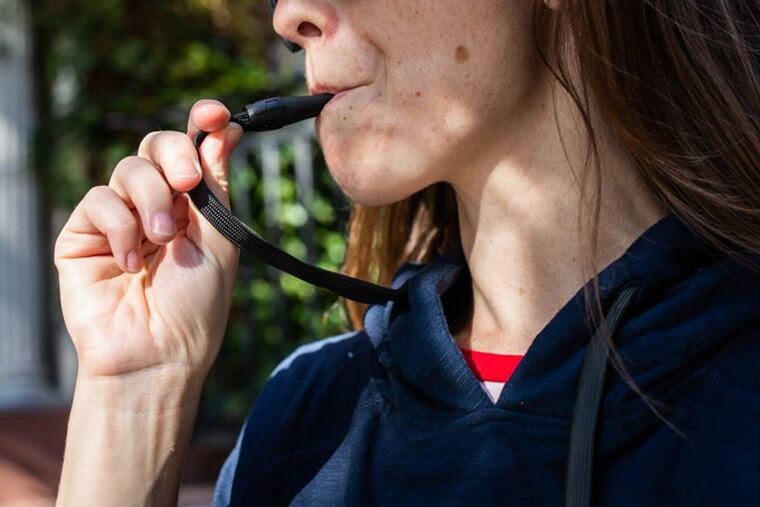Camouflaged vaping devices are hoodwinking parents and schools
A computer mouse. A phone case. Backpacks. USB jump drives. These are among the vaping kit options colorfully advertised online.

In yet another twist for worried parents, meet the vaping hoodie. The high school fashion mainstay — defined by a hood with drawstrings — is now available as a vaping device, ready to deliver a puff of nicotine (or marijuana) anywhere, anytime. Including in the classroom.
It marks an addition to the fleet of discreet — some would say camouflaged — vaping devices that have teachers and parents struggling to monitor the usage of a product that has surged in popularity among high school-age kids in the last two years, despite laws in most states that allow sales only to people 18 and up.
A computer mouse. A phone case. Backpacks. USB jump drives. The vaping kit options colorfully advertised online are fashionable and many.
Juul, the San Francisco-based company that dominates the e-cigarette trade, and other manufacturers tout their devices as tools for adults looking to get a nicotine fix without the toxins associated with burning tobacco. But the crowded market of devices and accessories that has sprung up around vaping is filled with products that seem tailored to teenagers who want to keep their use secret — and, according to parents and teachers, are all but impossible to keep out of kids’ hands.
Preliminary federal data released this month show more than one-quarter of the nation’s high schoolers had reported vaping in the previous 30 days, up from 11.7% in 2017. As the teen vaping scene has exploded, adults have had a hard time keeping up. In a 2018 survey, the Truth Initiative, an anti-tobacco advocacy group, surveyed middle and high school teachers on vaping and found that fewer than half recognized a photo of a Juul, the most commonly used device. A palm-size stick that charges via a USB, it’s easily mistaken for a flash drive to the uninitiated.
Sven-Eric Jordt has seen the challenge in his child’s school. By day, Jordt is an associate professor at Duke University, studying the health effects of inhaling various chemicals. By night, he educates his children on the potential risks of vaping. Recently, one of his daughters told him about the “Apple-like” watch manufactured by Uwell that is quickly becoming one of the more popular devices at her high school. With a touch of the finger, the face offers the time. But when removed from the wristband, it is a vaping device.
“The teachers have learned to recognize Juul,” Jordt said, “but this just looks like a watch.”
The Centers for Disease Control and Prevention continues to investigate a spurt of vaping-related lung illnesses, mostly affecting young people. Authorities have reported 380 cases of suspected cases nationwide, including 70 in California. Seven of the cases — including two in California — have resulted in death.
It’s unclear whether a single device or agent is causing those illnesses. Most of the patients have reported vaping cannabis, according to the CDC, but some patients said they had vaped only nicotine or vaped both. In California and other states, at least some of the cases are linked to vaping unregulated cannabis products. The outbreak has focused new attention on what federal officials now characterize as an epidemic of youth vaping.
Two states — Michigan and New York — have moved to ban sales of most flavored e-cigarette products, which are popular among young people; and President Donald Trump this month said he would launch a similar effort at the federal level.
While research continues into the long-term prospects of e-cigarettes as a tool to help people quit smoking, experts say there is clear evidence that teens should not vape. Nicotine can cause changes in the developing brain that make lifelong addiction more likely. The liquids in vaping devices contain a range of chemicals that can harm the lungs.
Until recently, Amazon sold the components of products that allowed people to build their own marijuana vapes. Some of these products have been linked to the current deadly outbreak. The online giant removed them after Minnesota Public Radio inquired about their sale.